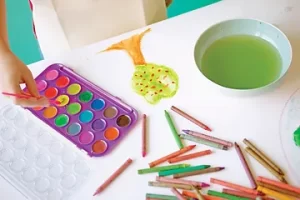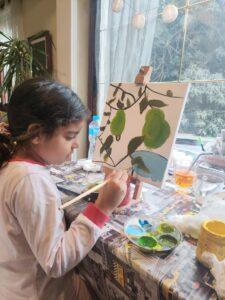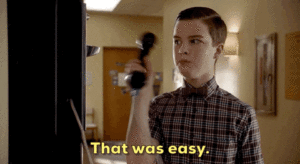watercolours supplies – Three easy tips to buying watercolour supplies
I remember when COVID hit and, like the rest of the world, we had to switch to online sessions. We had to rely on you, the parents, to provide the art supplies for class. We didn’t know, before that moment, how difficult this task was going to be on everyone.
We use these supplies everyday, so we know them well. But when it came to explaining what we needed, we hit a wall. We know many of you struggled with trying to find the right materials. There are so many options out there, it’s easy to get lost.
I get overwhelmed every time I walk into an art supplies store. And I can only imagine what it must be like when you want to find the right choice for your children. And since we know how much children love to paint. and we know how important it is to have at least one type of paint around the house. I’ll try to make it simple and explain the three most basic types of paint all children love and use. That way, the next time you go shopping, you’ll have knowledge by your side to help you make the right choice
Let’s start with the basics. You walk into a store and head over to the art section. You’re going to find these four choices. Oil paint, Acrylic paint, Water colour paint and Poster (Tempera) paint. For any child below the age of 12, I would recommend you stick with either Poster paint or Water colour paint. Older and more experienced children will learn how to use acrylic paint in no time.
Oil paints need more dangerous substances to clean the brushes. That’s why I would recommend oil paints only when they’re older. They need to first understand how to use dangerous materials in a safe way.
In this post, I’m going to discuss watercolours. I’ve based my advice on both economic and functional reasons. You’ll find advice on tempera and acrylic paint here.
watercolour supplies
Watercolours are very easy to use in their most basic function. Like their name suggests, watercolours need water to function. Before I started working with children, I didn’t know that watercolours had so many types. There are tubes, trays, liquid, pencil and even markers. Each one of these has a specific use that gives beautiful results. When a child is trying them for the first time, though, liquid watercolours is the easiest type.
And liquid watercolours are easy to make at home, which makes them economic and safe. We add a few drops of food colours into a small container of water and voila! A child as young as 3 or 4 can use this medium to paint bright, colourful pictures.
As children get older, they can move to tray watercolours and learn to use them. A tray of watercolours contains powder colour that needs water to activate it. Add more water and the colour will come to life.

Don’t forget to keep adding water, that’s how you make watercolours continue to live and paint. Did you forget to wash the brush between colours? Now you mixed the yellow on the brush with the pink on the tray by accident! Don’t worry, because you can get a clean tissue and wipe off the yellow. Now the pink is back to normal!
All types of watercolour can live for years. That makes them a very budget friendly material. And even if children work through them, you can still buy a new tray for a very reasonable price. Some brands will even allow you to replace the colour you need without buying a whole new tray of paint.
Now, to use watercolours, we need a surface, right? Here is where a lot of us make mistakes. We buy the wrong type of paper! The wrong type of paper can ruin an artwork and lead to frustration from our young artists. But how do we know what we should buy? Easy, look for the sketchbook that says watercolours on the cover! If you’re not sure, ask for the store assistant to help you. Please don’t try to use regular drawing notebooks with watercolours or acrylic.
The very thin paper will fall apart from the weight of the water and it will ruin the artwork. not to mention that it will also create a mess that we don’t need. That’s why it is very important to choose the right type of paper.

Brushes
You can’t use paint without a brush! But there are so many types out there, it’s confusing! Let’s make this easy then, will we? Look for soft bristle brushes! Now we’ll have another dilemma because there are different shapes. Again, to make it simple, choose flat and round brushes. A flat brush looks like a rectangle and a round one will look like a cylinder. The last thing you’ll need to choose are the sizes.
You can buy a small, medium and large brush of either shape (flat and round). Or you can make your life easy, ask for watercolour brushes that come in a pack of different shapes or sizes.

Now you are ready to head to the store and buy your young artist the supplies they need to get creative. Nothing says fun like paint and brush, and a little mess 🙂
book your first class with us now :
Want to avoid the mess and teach them how to create masterpieces? Then book your first class with us now. Sign up here and don’t forget to tell your family and friends.


